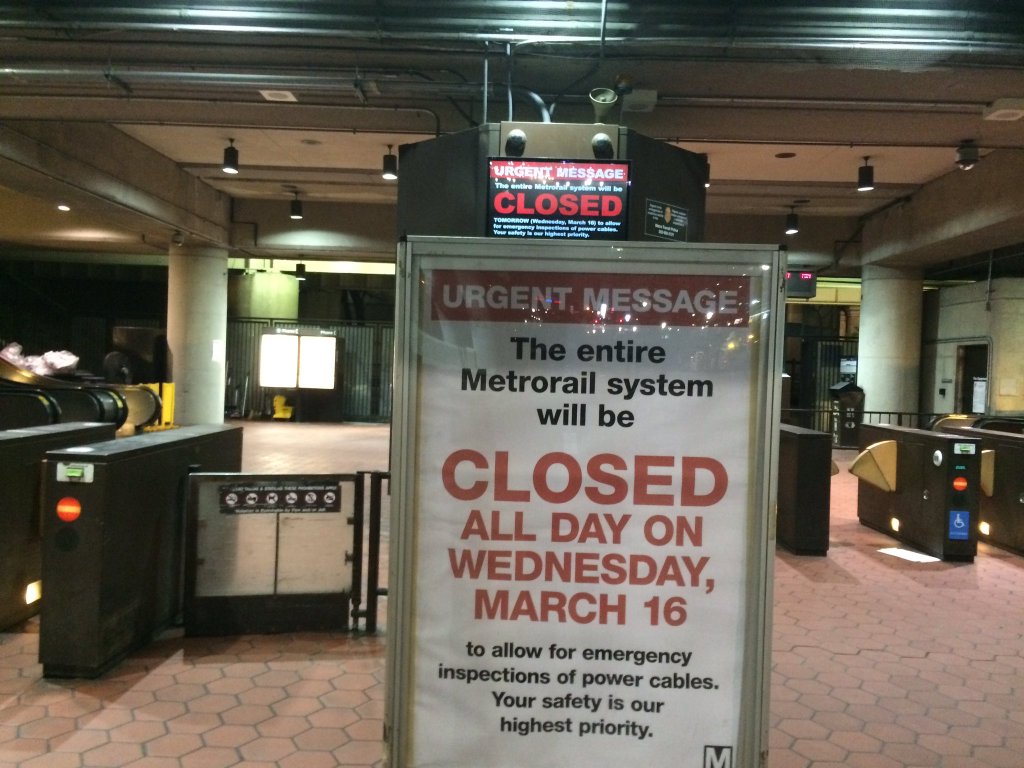WASHINGTON — Wednesday’s daylong Metrorail shutdown isn’t a surprise to one longtime observer of the system; it’s part of “a story that we’ve known for a long time.”
NBC Washington transportation reporter Adam Tuss told WTOP Wednesday morning that for years, “the level of investment hasn’t been there; the eye toward safety and maintenance has not been there.”
Tuss, WTOP’s former Sprawl & Crawl reporter, reported late Wednesday morning that about half the electrical cables that are being inspected have been checked, and some are being replaced.
WTOP’s Max Smith reports that Metro says they won’t be giving out any information until late afternoon on what inspectors have or haven’t found.
“I talk to front-line Metro workers all the time,” from train operators to track walkers, Tuss said.
“Quite frankly, there are a lot of people who are concerned with the way this system is set up.”
Tuss said the problems were part of a pattern, and referred to the situation outside of the Smithsonian station, where a train derailed last August after going over a section of track that had been detected to be out of alignment for more than a month.
“There’s a pattern here, with lax safety.”
Metro’s new general manager, Paul Wiedefeld, said on Tuesday that there were similarities between the cables that burned on Monday outside McPherson Square and the ones that caused the deadly smoke incident near L’Enfant Plaza on January 2015. Tuss says Wiedefeld went down onto the tracks himself on Monday to examine the cables.
Tuss adds that people are on their hands and knees Tuesday checking every cable. Of course, he also mentions the scenario that’s on everyone’s mind: There’s no guarantee that this inspection won’t turn up more problems, which would result in a longer closure.
The cables go from one section of the third rail to another, perhaps 60 to 70 feet, Tuss says. The Federal Transit Administration and National Transportation Safety Board have examined them before, and told Metro that “they weren’t installed properly,” with the appropriate covers to prevent them from getting wet. Tuss says the fix could be as simple as putting on a new cover, or it could be more complicated.
Tuss says that the shutdown is a major move by Wiedefeld, and that it may not be a popular one — commuters groused to WTOP through the morning that the shutdown should have been delayed until the weekend — but it was a tough decision.
Wiedefeld’s “hard line” on safety necessarily leads to decisions that might inconvenience people, Tuss says, but “you have to make tough decisions if you’re going to put safety first and foremost.”
Tom Temin, of Federal News Radio, wrote that Wiedefeld’s move “sends unmistakable messages. Make no mistake about who’s in charge, and make no mistake Metro is entering a new era.”
In a conversation later, Temin said that “any time you land into a situation like this,” referring to Metro’s safety woes, “if you’re not decisive and authoritative from the outset, you lose your opportunity” to create real change.
He adds that he hopes Wiedefeld’s move “will signal to employees that you don’t have to hide” regarding any safety problems that they discover.







